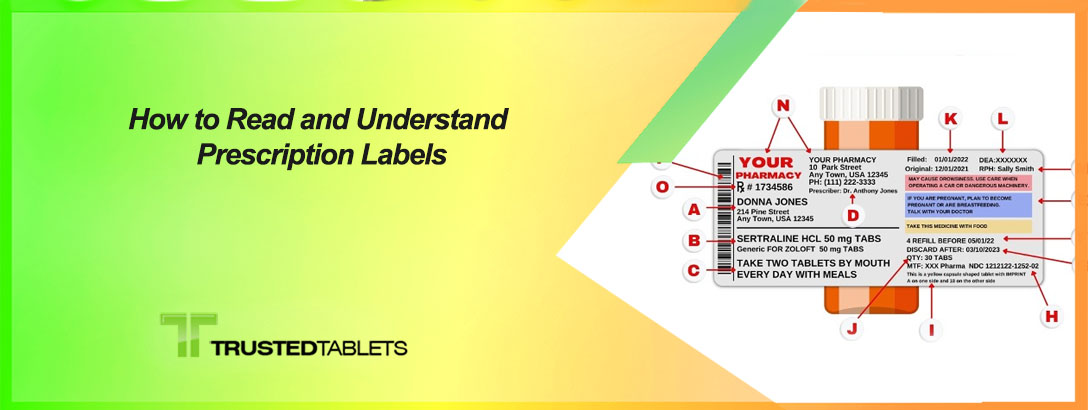Prescription labels can sometimes look like they’re written in a different language, making it challenging for many to understand crucial information about their medications. Whether you’re picking up a new prescription or just want to understand your current medication better, decoding prescription labels is essential for your health and safety. In this guide, we’ll delve into common questions and provide comprehensive answers to help you navigate prescription labels with confidence.
1. What information is typically included on a prescription label?
Prescription labels contain vital information to ensure safe and effective medication use. Here’s what you’ll commonly find:
- Patient Information: Name of the patient for whom the medication is prescribed.
- Prescriber Information: Name of the prescribing doctor or healthcare provider.
- Medication Details: Name of the medication, strength, dosage instructions, and quantity.
- Directions for Use: How and when to take the medication.
- Warnings: Important warnings or precautions associated with the medication.
- Expiration Date: Date after which the medication should not be used.
- Pharmacy Information: Name and location of the dispensing pharmacy.
Understanding each of these sections is crucial for safe medication management.
Patient Information and Prescriber Details
…
2. How can I decipher dosage instructions on a prescription label?
Dosage instructions on prescription labels may seem complex, but they follow a standard format. Here’s what you need to know:
- Dosage Strength: Indicates the strength of the medication per unit (e.g., 50mg).
- Frequency: How often you should take the medication (e.g., once daily, twice daily).
- Administration Route: Whether to take orally, apply topically, etc.
- Special Instructions: Any specific directions, such as taking with food or at bedtime.
Understanding these elements helps ensure you take the right dose at the right time.
Deciphering Dosage Instructions
…
3. Why is it important to know about potential side effects listed on prescription labels?
Knowing potential side effects is crucial for monitoring your health and knowing when to seek medical help. Here’s why it matters:
- Awareness: Understanding possible side effects prepares you for what to expect.
- Safety: Some side effects may indicate serious reactions requiring immediate attention.
- Communication: Enables you to discuss concerns with your healthcare provider.
Being aware empowers you to manage your medication safely.
Importance of Knowing Side Effects
…
4. How do I identify drug interactions from prescription labels?
Identifying potential drug interactions is essential to avoid harmful effects. Here’s how to spot them:
- List of Medications: Check if there are warnings about interactions with other drugs.
- Consult Pharmacist: Pharmacists can advise on potential interactions, including with over-the-counter drugs.
- Inform Healthcare Provider: Always inform your doctor about all medications you’re taking.
Understanding drug interactions prevents complications.
Table: Summary of Prescription Label Information
| Section | Information Included |
|---|---|
| Patient Information | Name of the patient |
| Prescriber Details | Name of the prescribing doctor or healthcare provider |
| Medication Details | Name, strength, dosage instructions, quantity |
| Directions for Use | How and when to take the medication |
| Warnings | Important precautions |
| Expiration Date | Date after which the medication should not be used |
| Pharmacy Information | Name and location of the dispensing pharmacy |


